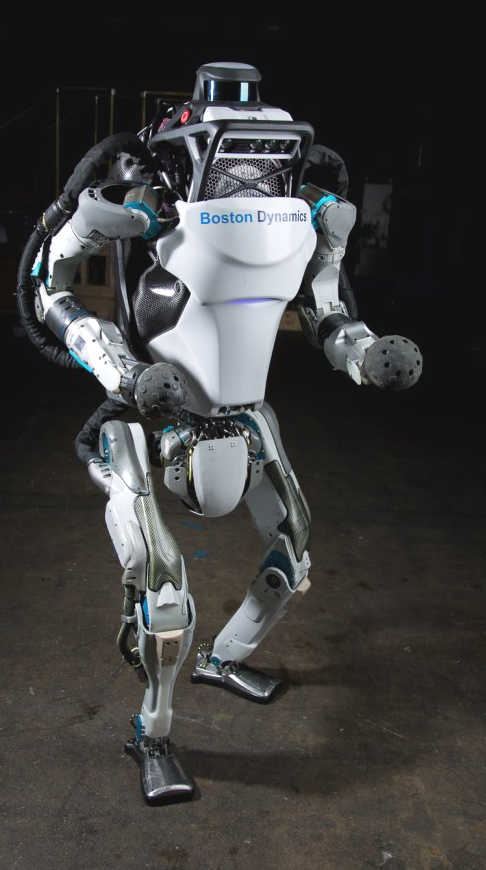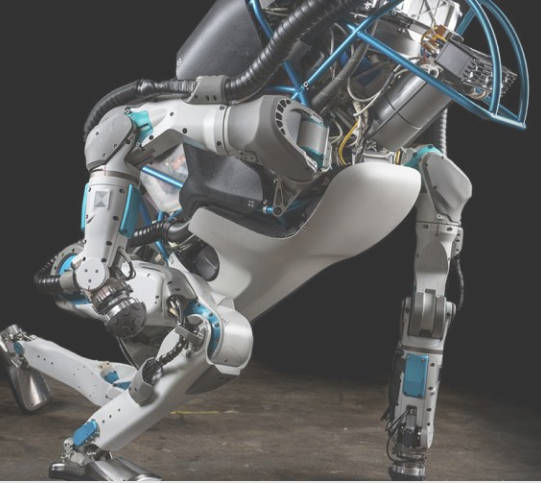| Atlas and the Backflip |
| Written by Harry Fairhead | |||
| Saturday, 18 November 2017 | |||
|
Atlas, Boston Dynamics' bipedal robot, has progressed from falling over to performing impressive gymnastics. There isn't much information on how it does it, but it is still worth watching.
Bipedal robots are generally something to have a laugh about as they tend to fall over in situations where a human would just ace it. Even when they manage to do something impressive, the tether that most of them have to protect them and supply power detracts from the achievement, see for example the video of Honda's E2-DR rescue robot that has better mobility and agility than most. In this case, however, we have Atlas doing backflips, something really impressive with no sign of a power or safety cable and, unlike the speeded-up robot vides we are familiar with, the video has to be in real time - unless gravity is considerably different in Boston:
What is interesting are the mistakes Atlas makes at the end of the video. Not so much the time it falls over completely, although that does show how much tougher the machine is compared to the early Atlas, but the corrected landing. If you watch the way the robot moves its legs, you can see that this is by no means a pre-choreographed move. Clearly it is reacting to its body position and has a range of moves to restore balance. That's some fast computing!
There is still room for improvement, however. Notice the strange trembling motion in the legs on landing at about 30 seconds. The Boston Dynamics we site says: The Atlas hardware takes advantage of 3D printing to save weight and space, resulting in a remarkable compact robot with high strength-to-weight ratio and a dramatically large workspace. Stereo vision, range sensing and other sensors give Atlas the ability to manipulate objects in its environment and to travel on rough terrain. Atlas keeps its balance when jostled or pushed and can get up if it tips over.
Atlas didn't do so well in the DARPA robot challenge and it mainly served to point out how unstable a bipedal robot was at the time. It made quadrupeds seem like a better bet, but in the built environment where everything is designed to be used by a two-legged, two-arm human, bipedalism is still desirable. I wonder how well Atlas would do at the DARPA challenge now?
More Informationhttps://www.bostondynamics.com/atlas Related ArticlesBoston Dynamics & Shaft Sold To SoftBank Google Adds Boston Dynamics To Its Robotics Acquisitions Spot Is Boston Dynamics' New Robot "Dog" Honda's Disaster Response Robot Robot Fear Of Falling - South Koreans Win DARPA Robotics Challenge Introducing SpotMini - A Domestic Pet Helper Atlas Robot - The Next Generation To be informed about new articles on I Programmer, sign up for our weekly newsletter, subscribe to the RSS feed and follow us on Twitter, Facebook or Linkedin.
Comments
or email your comment to: comments@i-programmer.info |
|||
| Last Updated ( Sunday, 03 March 2019 ) |




